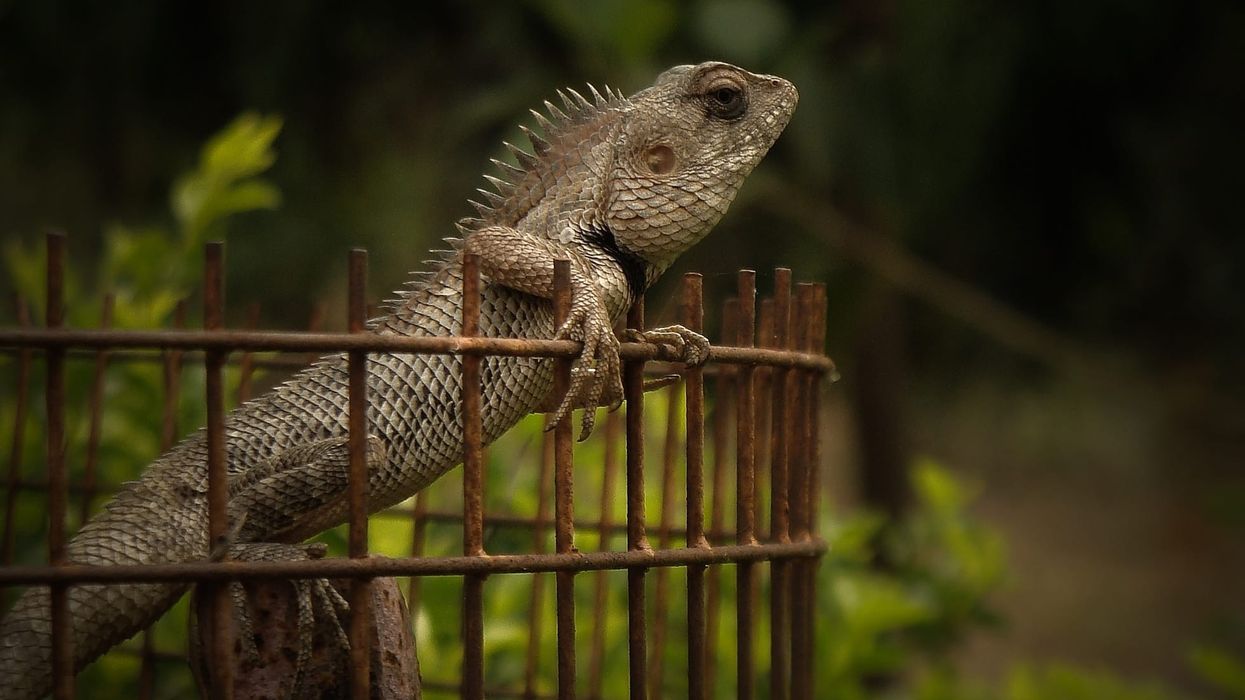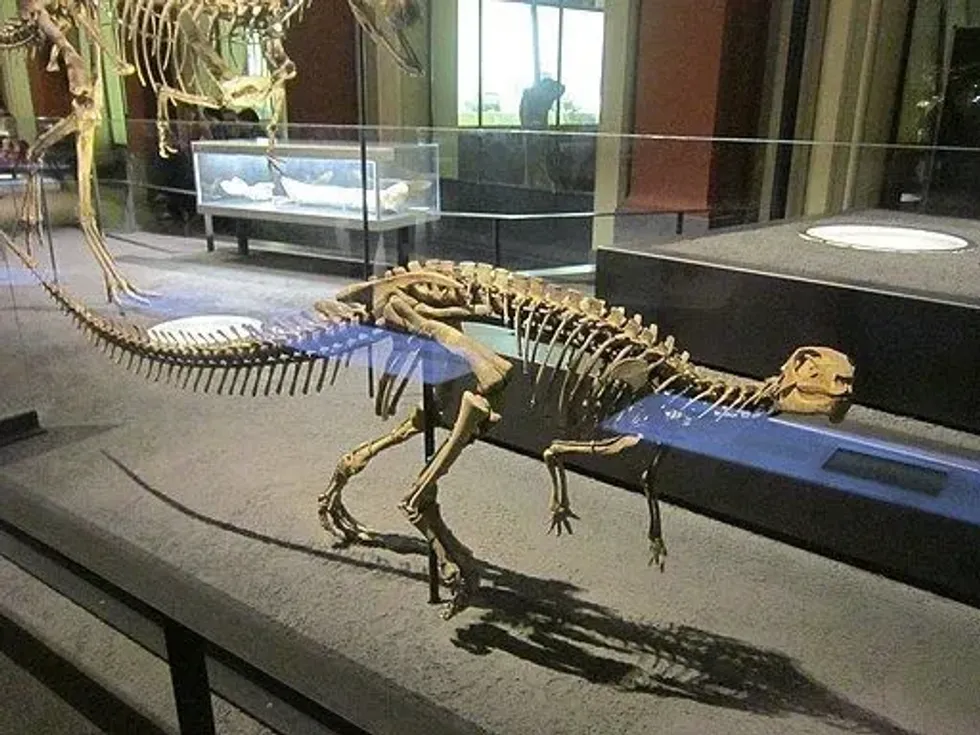A species of the order Rodentia and family Heteromyidae, the banner-tailed kangaroo rat (Dipodomys spectabilis) is best known for its long hind legs and tail. The species is mainly found in Mexico and the southwestern United States.
The geographical range includes arid parts of western Texas, Arizona, and northern New Mexico. In Mexico, the banner-tailed kangaroo rat is found in Sonora, Chihuahua, and Zacatecas. A small population also occurs in Aguascalientes and San Luis Potosi in Mexico.
The banner-tailed kangaroo rat is the largest species in the Dipodomys genus, the average weight and length are 0.31 lb (145 g) and 9-14 in (23-36 cm), respectively. The dorsal surface of the species is generally ochre-buff with some black-tipped hairs, while the underparts are white.
The most unique and distinctive feature of this species is the bushy tail that is black-banded, as well as, white-tipped. The hind legs are longer than the forelegs and are generally used to hop.
These rodents generally dwell in burrows of scattered shrubs and desert grassland. They generally prefer areas with heavier soils because light soils would not support the complex burrow system of these rodents. They are herbivores and primarily feed on grass seeds.
The IUCN listed the species in the Near Threatened category. Threats to banner-tailed kangaroo rats generally include loss of habitat and predation. If loss of habitat and predation continues, the species will become Endangered in the coming years, however, the population throughout the range in Texas and other local areas is stable as of now.
Let's read more fun facts about the banner-tailed kangaroo rat, and if you find this article interesting, don't forget to check out exciting facts about different animals like the nutria and gopher.
Banner-Tailed Kangaroo Rat Interesting Facts
What type of animal is a banner-tailed kangaroo rat?
The banner-tailed kangaroo rat (Dipodomys spectabilis) is the biggest species of the Dipodomys genus. The species is found in several states of the United States and Mexico such as Texas, Arizona, Sonora, and Chihuahua. The most unique and distinctive feature of this species is the black-banded and white-tipped bushy tail.
What class of animal does a banner-tailed kangaroo rat belong to?
The banner-tailed kangaroo rat (Dipodomys spectabilis) belongs to the class of Mammals, the order Rodentia, the family Heteromyidae, and the Dipodomys genus. The rodents of the Dipodomys genus are nocturnal.
How many banner-tailed kangaroo rats are there in the world?
The exact population of banner-tailed kangaroo rats (Dipodomys spectabilis) is not known as of now, but the population throughout the range in Texas and other local areas is stable currently, Also, the species is listed as Near Threatened in the IUCN Red List.
Where does a banner-tailed kangaroo rat live?
The banner-tailed kangaroo rat (Dipodomys spectabilis) is mainly found in Mexico and the southwestern United States. The banner-tailed kangaroo rat range includes arid parts of western Texas, Arizona, and northern New Mexico. In Mexico, the banner-tailed kangaroo rat is found in Sonora, Chihuahua, and Zacatecas. A small population also occurs in Aguascalientes and San Luis Potosi of Mexico.
What is a banner-tailed kangaroo rat's habitat?
The banner-tailed kangaroo rat (Dipodomys spectabilis) generally dwells in burrows of scattered shrubs and desert grassland, and they generally prefer areas with heavier soils since light soils would not support the complex burrow system of these rodents. They are herbivores and primarily feed on grass seeds.
Who do banner-tailed kangaroo rats live with?
Banner-tailed kangaroo rats are solitary and prefer to live alone, also the home range of these kangaroo rats remains within 0.5 acre (0.2 ha). During the breeding season, adult kangaroo rats generally come together.
How long does a banner-tailed kangaroo rat live?
Banner-tailed kangaroo rats generally live for 12.7 years if kept in captivity, while the lifespan of these kangaroo rats in the wild is currently not known.
How do they reproduce?
Like other species of the family Heteromyidae, banner-tailed kangaroo rats use similar methods to reproduce and these animals generally mate year-round. Male kangaroo rats are attracted to the urine of estrous females and they also compete with other individuals. Females go through a gestation period of around 23 days and generally lay around one to three offspring a litter.
At birth, juveniles are toothless, hairless, wrinkled, eyes and ears are closed, and are pink in color. Young male kangaroo rats generally grow at a faster pace in terms of mass than female young kangaroo rats. They remain in natal burrows for around six to seven months.
What is their conservation status?
The IUCN listed the species in the Near Threatened category. Threats to banner-tailed kangaroo rats generally include loss of habitat and predation, and if loss of habitat and predation continues, it will make the banner-tailed kangaroo rat Endangered in the coming years.
This means conservation of the banner-tailed kangaroo rat will be needed in the future. However, the population throughout the range in Texas and other local areas is stable as of now.
Banner-Tailed Kangaroo Rat Fun Facts
What do banner-tailed kangaroo rats look like?
The dorsal surface of banner-tailed kangaroo rats is generally ochre-buff in coloring. It has some black-tipped hair, while the underparts are white. The most unique and distinctive feature of these kangaroo rats is the black-banded and white-tipped bushy tail. The hind legs are longer than the forelegs and are generally used to hop.
How cute are they?
The most fascinating features of these kangaroo rats are their long hind legs and tails. Like kangaroos, these little rats hop and one would love to witness that.
How do they communicate?
Like other rats of the order Rodentia, this rodent generally uses tactile and chemical cues to communicate with each other. Estrous female kangaroo rats attract males with their urine during the breeding season. They also growl, squeak, and squeal to indicate danger or find mates.
How big is a banner-tailed kangaroo rat?
The banner-tailed kangaroo rat is the largest species in the Dipodomys genus. The average weight and length of this species are 0.31 lb (145 g) and 9-14 in (23-36 cm), respectively. The species is three times bigger than the naked mole-rat, while some are bigger than the rice rat.
How fast can a banner-tailed kangaroo rat run?
The exact speed of this rodent is not known as of now.
How much does a banner-tailed kangaroo rat weigh?
The maximum weight of the banner-tailed kangaroo rat is around 0.31 lb (145 g).
What are the male and female names of the species?
Male rats are known as bucks, while the term does is used to refer to female rats.
What would you call a baby banner-tailed kangaroo rat?
People generally use terms such as pups and kittens to refer to young banner-tailed kangaroo rats. Young male kangaroo rats generally grow at a faster pace in terms of mass than female young kangaroo rats. They remain in natal burrows for around six to seven months.
What do they eat?
They are herbivores and often prey on plants, grasses, and seeds. These animals are often preyed upon by coyotes, badgers, foxes, owls, and snakes.
Are they dangerous?
Very little is known about their behavior, but these rats can turn violent if someone approaches their territory and tries to threaten them. Males often compete with each other during the breeding season.
Would they make a good pet?
The population of these beautiful rats is decreasing constantly and it is advised not to keep them as pets.
Did you know...
The major function of their tail is to provide perfect balance.
What is special about the banner-tailed kangaroo rat?
These rats are generally known as masters of desert survival as they have the ability to reduce the amount of water intake. They survive from the water metabolized from seeds. Kangaroo rats can die if they consume a large amount of water.
How did the banner-tailed kangaroo rat get its name?
These rats are small-sized kangaroos but without pouches. These rats possess long hind legs and because of their bipedal form they are known as kangaroo rats. They hop generally like kangaroos. Also, the species has a white-tipped bushy tail that waves like a banner.
Here at Kidadl, we have carefully created lots of interesting family-friendly animal facts for everyone to discover! Learn more about some other mammals from our black rat facts and mice facts pages.
You can even occupy yourself at home by coloring in one of our free printable banner-tailed kangaroo rat coloring pages.
* Please note that this is an image of a rufous rat-kangaroo, not a banner-tailed kangaroo rat. If you have an image of a banner-tailed kangaroo rat, please let us know at hello@kidadl.com.










